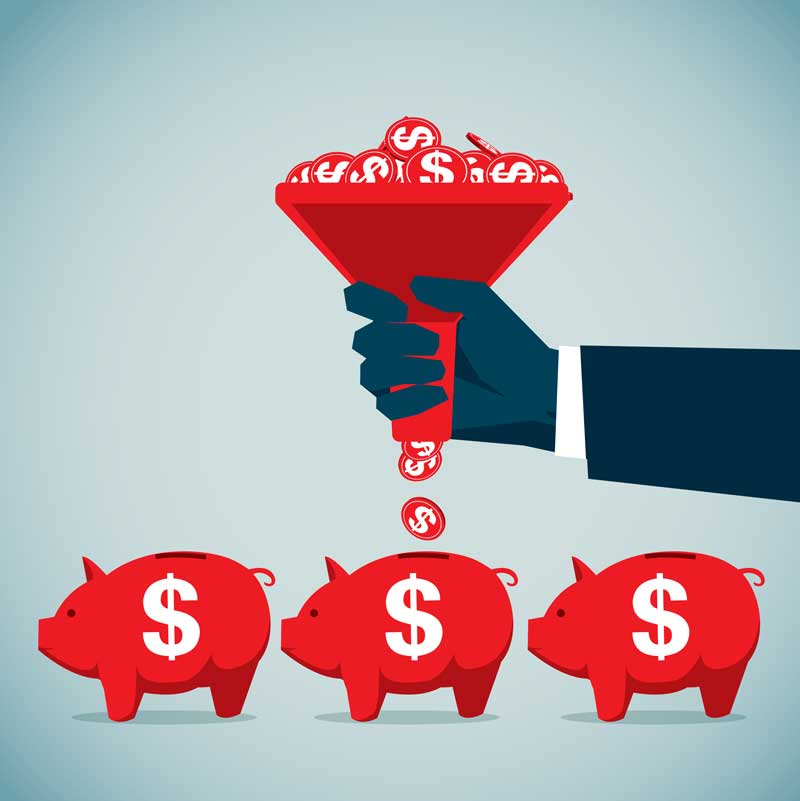A wide variety of studies and proposals about universal basic income (UBI) are circulating throughout Canadian and international policy conversations today. So what is it? Essentially, exactly what it sounds like: unconditional cash payments to help lift people out of poverty.
Although there are many different ways to implement a basic income program—including the amount, the source of funding, the nature and size of reductions in accompanying assistance programs—most have five main characteristics. The payments are:
- Regular—a set amount at fixed intervals.
- Cash—rather than a voucher or other services.
- Individual—not per household.
- Universal—with no means test to qualify.
- Unconditional—with no requirement to work, willingness to work or demonstration of some other need.
The concept of a guaranteed minimum income is not new. In the 1970s, a small town in Manitoba tested out the theory. In a bold social experiment—aptly nicknamed “Mincome”—the federal government provided 30 per cent of Dauphin’s population with a guaranteed level of income. The goal of the program, which ran from 1974 until 1978, was to find out whether a stable income would improve health and community life. The program was designed so that if a household’s income dropped below a certain amount, the program would top it up to the same amount as the welfare rates at the time.
The results indicated positive social outcomes—hospitalizations for mental health decreased, there was a higher graduation rate among young people, and accident and injury rates generally declined.
Since that 1970s experiment, the idea of providing a basic income has been raised now and again, most often by academics and community advocates, and is now gaining another hearing.
In Finland, the government recently concluded a two-year experiment. A random sample of 2,000 unemployed people between the ages of 25 and 58 were given a monthly payment of 560 euros, with no requirement to seek or accept employment. Participants who began working continued to receive the payments.
Although this program was not a full UBI experiment, as the monthly amount was not enough to live on, advocates hoped it might still provide information on whether an unconditional payment would reduce anxiety among recipients, and allow the government to simplify the complex social security system that struggles to cope with the fast-moving and insecure labour market.
Closer to home, the British Columbia government has announced an interest in trialling a UBI program. With so much interest in UBI, but not a lot of traction, the question becomes: What are the pros and cons of such a program? Here are three of the main arguments for and against:
Pros
- UBI can help reduce poverty and income inequality and improve health in communities.
- UBI leads to lower school dropout rates and has demonstrated positive job growth.
- UBI means that non-working parents and caregivers have a guaranteed income and therefore empowers those in unpaid roles, especially women.
Cons
- UBI is universal, meaning money that would otherwise only be available to those in need is spread out to all, including wealthier individuals.
- UBI may remove the incentive to work for some, which has a negative impact on the economy and may lead to a labour and skills shortage.
- UBI can be very expensive. There is also a concern that in order to reduce costs governments will eliminate other social programs designed to target specific social issues.
There are still questions associated with UBI. For Canadians, many of the answers will not be known until after pilot programs and more studies are completed in the coming years.
Regardless of whether UBI is the answer, one of the biggest advantages of this government interest and pilot projects is that they demonstrate people are becoming more aware of the needs in our communities. Unfortunately, poverty is a reality experienced by too many Canadians. Bold and innovative programs may provide some new and effective solutions for reducing inequality.
Jessica McKeachie is the public affairs director for the Canada and Bermuda Territory.
Feature illustration: © erhui1979/iStock.com










Leave a Comment